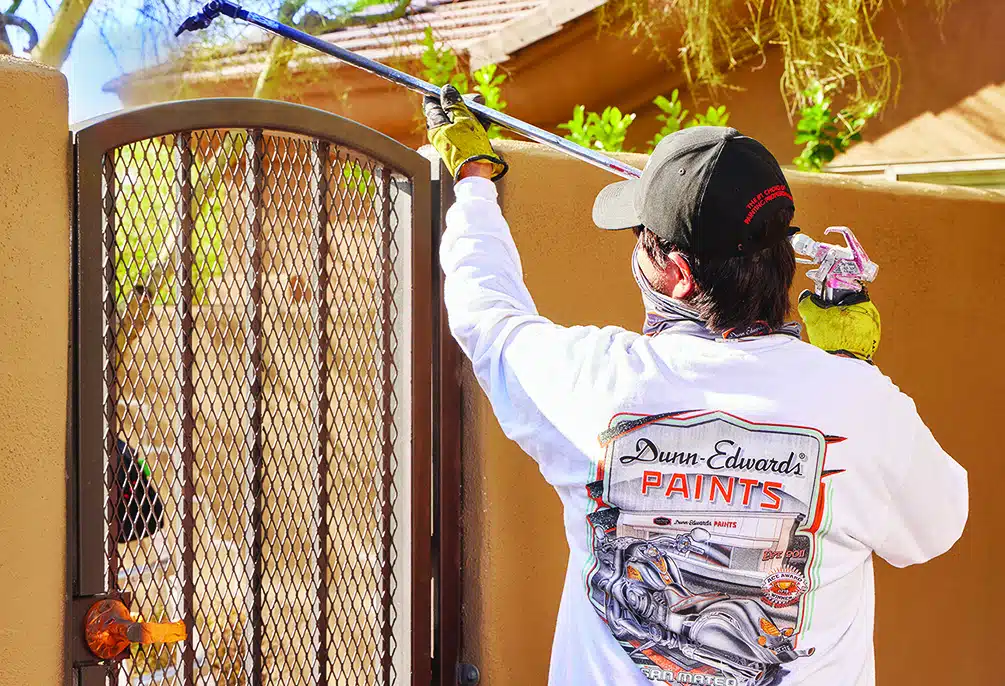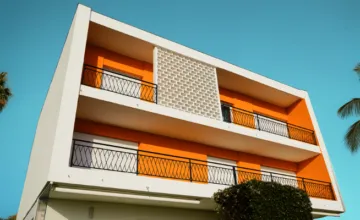Then, Now & Forever® —The Spanish Colonial Collection
05/04/2015 | Sara McLean |
We are excited to introduce the next set of historic colors in our new Then, Now & Forever® collection series, the Spanish Colonial collection. Researched extensively by the team at Architectural Resources Group, Inc., in San Francicso, we focus on early California and its missions and adobes. During this era between the 1650s and 1840s, the pioneering landscape and religion had a great influence on the American West, and many of the towns in the Southwest today still showcase the influence of this architectural style.
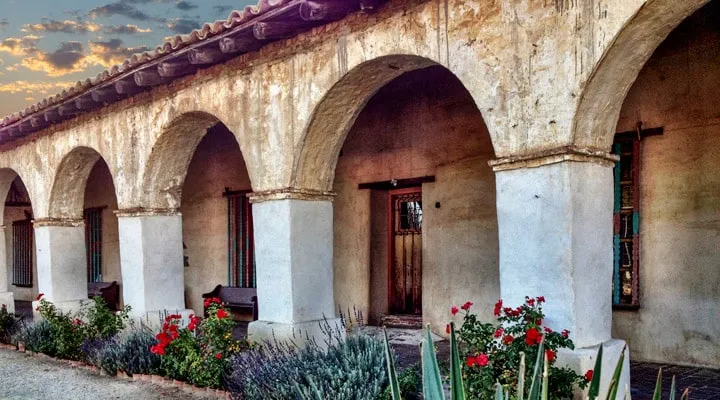
Mission San Miguel, San Miguel, CA
Background
The western territories of the country were held initially by the Spanish, who sent missionaries to establish new settlements. Colonization was to follow a specific set of guidelines, by which communities were created and run by the religious order as a means to teach and convert the native Indian tribes to Catholicism. They were agricultural in nature but were accompanied by Spanish soldiers to provide protection. The best known of the missionary priests is Father Junipero Serra, a Franciscan who was sent to take over and expand the settlements when King Charles banished the Jesuits in the late 18th century.
As the colonies grew, more permanent housing was laid out to surround and emanate from a central plaza where the church was located, with the front face of the building set directly at the sidewalk line and a private courtyard at the rear. The church and dwellings were constructed using Hispanic and Indian building practices with mud wall (adobe) construction and flat, earthen roofs covered in thatch. These roofs were continually lost to fire until it was discovered that baked mud tiles would provide better protection from rain and were virtually fireproof.
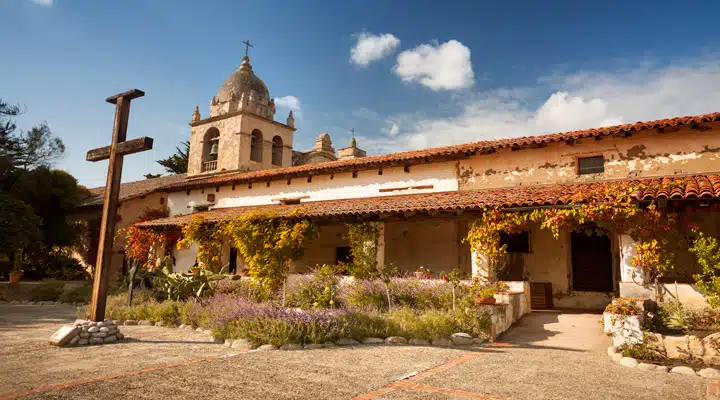
Carmel Mission, Carmel, CA
"The use of roof tiles, which began at Mission San Antonio de Padua in 1776, became widespread in other missions and now seems an essential element of the California Hispanic although tar was commonly used for the roofs of houses."1 Chimneys were created through the same process of forming and drying mud bricks; a process to fire the bricks was developed later and led to even greater capabilities for ornamentation.
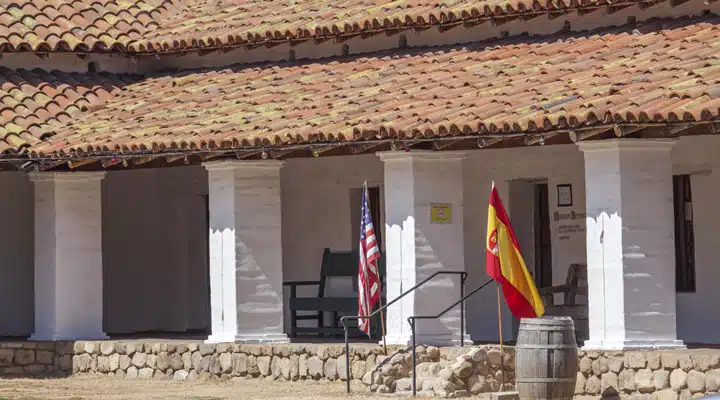
Casa de la Guerra, Santa Barbara, CA

Carmel Mission, Carmel, CA
Although early structures were fairly simple in style, they became more elaborate as more resources became available. As the community grew, artisans trained in building were brought in from Mexico to provide a more sophisticated means for building and for decorating the church, which was the center of the community. The adobe walls were coated with lime plaster and whitewashed, then the drywall was painted. Missionaries, soldiers and Indians all provided the labor and design for the decorative painting of the interior walls and, sometimes, exteriors as well.
"Wall painting, or decoration, it may be claimed, was not unknown to the natives, for here and there throughout California one may still find, on large boulders and on the walls of caves, figures of animals and men, signs and symbols that these Indians or their ancestors painted. They used native pigments and charcoal, or soot, mixed with a medium that remains a secret with them… Their pigments and many of their designs were carried over into the mission period. One finds, therefore, motifs of pure Indian conception incorporated with conventional designs introduced by the Padres or such artists as Esteban Munras who, assisted by the Indians, painted the church walls of Mission San Miguel."2
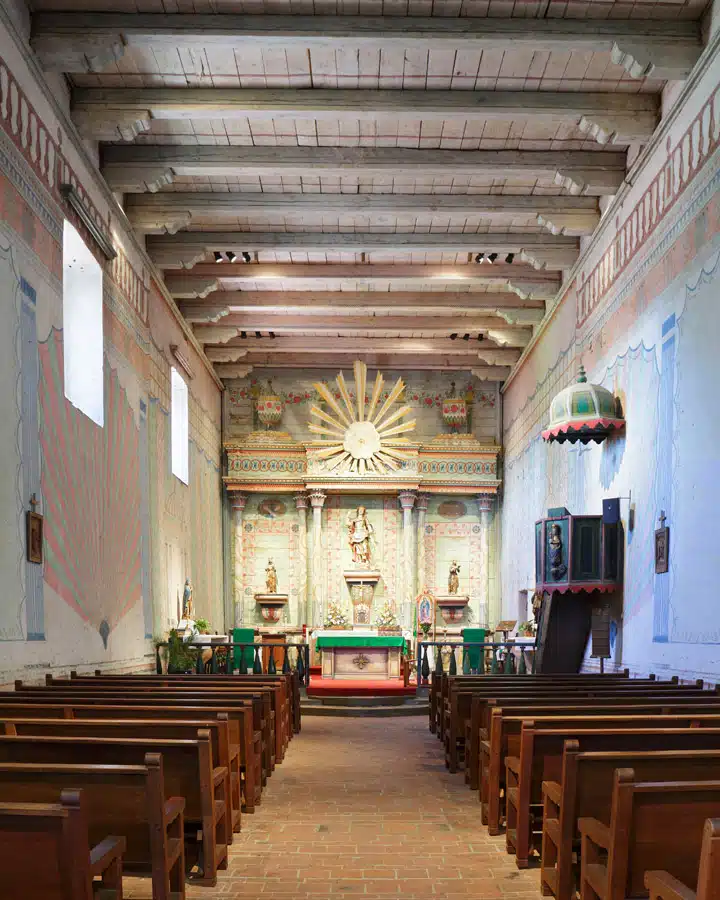
Mission San Miguel, San Miguel, CA
The Influence of Color on Spanish Colonial Architecture
The designs for the paintings on the walls of the Mission San Miguel (1821) in California are believed to have been taken from pattern books. Descriptions of the paintings, which remain remarkably intact, say that the "pillars are mottled in imitation of marble, and the altar and mural decorations are in colors, chief of which are blue, green, red, pink, and pale-green. The base of the panellings is pink."3
Mission San Luis Rey de Francia, south of Santa Barbara, was started in 1798. The interior decoration was carried out in the 1820s, and the original decorations remain. An internal arch that spans from side to side is described as being black and red with areas of blue-green to imitate marble; the pulpit area "original paint — a little of it — still remains. It appears to have been white panels, lined in red and blue."4
In many buildings, a common decorative treatment for "The lower part of the wall, usually referred to as the dado or wainscoting, could be of a single color, often red…"5
Naturally, at that point in time there was no method for creating paint, except through the manipulation of plants and other natural substances6 by crushing, boiling and burial. Pigments created from flower petals were initially thought to have been included in this source group but their colors fade too quickly to have been useful. In descriptions of the interior decorative paintings of San Miguel, the paint is said to be "Vegetable colors from berries, lichens, and mosses were mixed with cactus juice and glue from bones"7 and "the reds were gained from stones picked up from the beach. The glue was manufactured on the spot from the bones, etc., of the animals slaughtered for food."8 A similar method is described for the Mission San Juan Capistrano. "The paint used for the ceiling was made from rust-red cinnabar rock from 15 miles away, mixed with cactus juice."9

Mission San Miguel, San Miguel, CA
One author describes an experiment to re-create the methods by which certain colors were obtained. "White diatomaceous earth, an inert material, found in great quantities within a few miles from the first site of Mission La Purisima Concepcion, seemed the answer… Malachite reduced with white diatomite gave the desired shade of green, that green which artists delight to paint window-shutters and doors of old houses in Indian pueblos of New Mexico and Arizona. This same green was used throughout the Southwest in the decoration of walls, doors, and personal belongings."10 Although the source of much of the pigment material was local, it's also possible that some more exotic material was imported from the missionary mother countries of Mexico and Spain.
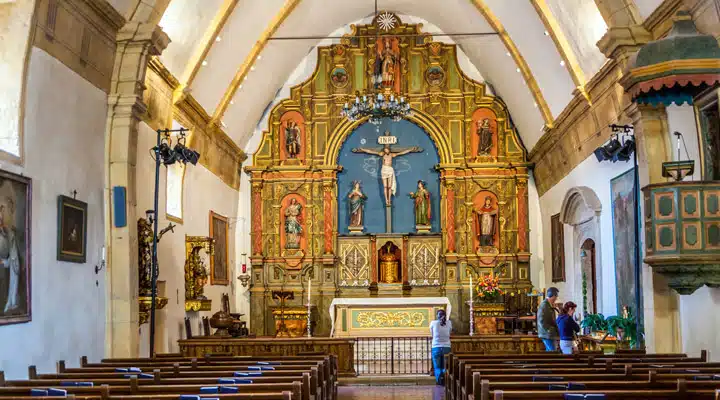
Carmel Mission, Carmel, CA
Click here to download the PDF document of Spanish Colonial color names and origins.
Noted References:
1. James Early, "Presidio, Mission, and Pueblo", Southern Methodist University Press: 2004; p. 164.
2. Edith Webb, "Pigments used by the mission Indians of California," The Americas, vol. 2, no. 2, (Oct 1945), p. 139.
3. George Wharton James, "In and Out of the Old Missions of California," Little, Brown & Co.; Boston: 1905, p. 335.
4. George Wharton James; p. 258
5. Norman Neuerberg, "The Decoration of the California Missions," Bellerophon Books: Santa Barbara; 1989; p. 18.
6. The website http://www.primitiveways.com/rocks_minerals_%26_us... lists the use of chalk, cinnabar, diatomaceous earth, graphite, hematite, limonite, malachite, manganese as mineral sources for pigments.
7. Alison Lake, "Colonial Rosary: the Spanish and Indian Missions of California," Swallow Press: Athens, Ohio: 2006, p. 117.
8. George Wharton James, p. 333.
9. Lake, p. 112 (as cited from Fremont Older book, p. 130.)
10. Webb, p. 149






